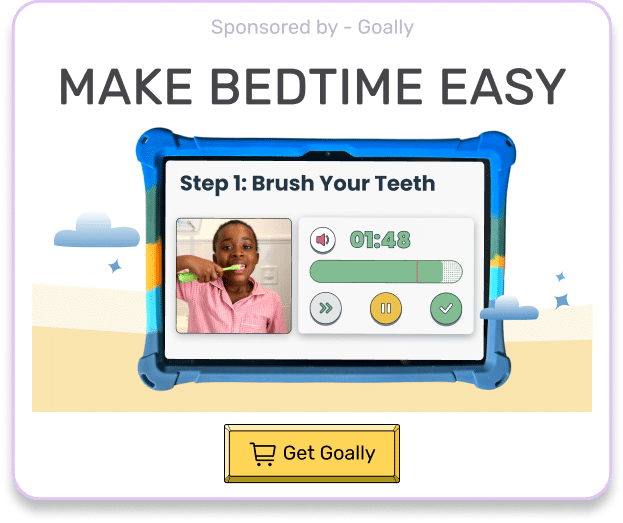As a licensed practitioner working closely with kids, I’ve seen the joy and challenges that come with ensuring their dietary needs are met. Dietary restrictions can be particularly challenging for kids with disabilities. But understanding and navigating these restrictions can significantly improve their quality of life. This blog will explore common dietary restrictions and provide actionable tips to help parents and caregivers ensure their kids receive the nutrition they need.
Table of Contents
1. Gluten-Free Diet
A gluten-free diet excludes the protein gluten found in grains like wheat, barley, and rye. Kids with celiac disease or gluten sensitivity need to avoid gluten to prevent symptoms like stomach pain, bloating, and diarrhea.
Transitioning to a gluten-free diet can be overwhelming, but many gluten-free alternatives are available. For example, you can replace regular pasta with rice or quinoa pasta. Gluten-free bread, cereals, and snacks are also widely available in most grocery stores. Always check food labels for gluten-containing ingredients.
2. Dairy-Free Diet
A dairy-free diet eliminates all dairy products, including milk, cheese, yogurt, and butter. This diet is essential for kids with lactose intolerance or a dairy allergy. Symptoms of dairy intolerance can include stomach cramps, diarrhea, and skin rashes.
Finding dairy-free alternatives is easier than ever. Look for plant-based milks like almond, soy, or oat milk. Dairy-free cheeses and yogurts made from coconut or cashew are also great options. When cooking, you can use olive oil or coconut oil instead of butter.

Read more: Food Sensitivity Test for Kids
3. Nut-Free Diet
For kids with nut allergies, even a small amount of nuts can trigger a severe allergic reaction. A nut-free diet requires careful reading of food labels and avoiding products that may contain nuts or be processed in facilities that handle nuts.
There are plenty of nut-free alternatives available. Sunflower seed butter and soy butter are excellent substitutes for peanut butter. Many schools and public places also have nut-free policies to help protect kids with nut allergies.
4. Low-Sugar Diet
Excessive sugar intake can lead to various health issues, including obesity and tooth decay. For neurodivergent kids, high sugar consumption can also affect behavior and concentration.
Reducing sugar in your child’s diet doesn’t mean eliminating all sweets. Opt for natural sweeteners like honey or maple syrup and choose fruits over sugary snacks. Reading labels is crucial, as many processed foods contain hidden sugars.
What is the best diet for hyperactivity disorder in kids?
5. Low-Salicylate Diet
Salicylates are chemicals found in many fruits, vegetables, and other foods. Some kids with ADHD or autism may be sensitive to salicylates, experiencing symptoms like hyperactivity or stomach issues.
To manage this sensitivity, try reducing foods high in salicylates like berries, tomatoes, and certain spices. Instead, focus on foods lower in salicylates such as bananas, pears, and green beans. Consulting with a nutritionist can help you create a balanced low-salicylate diet.
6. Soy-Free Diet
Soy is a common allergen found in many processed foods, including some unexpected items like bread and canned tuna. For kids with a soy allergy, avoiding soy is critical to prevent allergic reactions.
Look for soy-free labels on products and consider using alternative protein sources like meat, eggs, and legumes. Soy-free sauces and snacks are becoming more available, making it easier to maintain a soy-free diet.

7. Egg-Free Diet
Egg allergies are common in young kids and can cause symptoms like skin rashes, digestive issues, and respiratory problems. An egg-free diet means avoiding eggs and foods containing eggs.
Egg substitutes like flaxseed meal, applesauce, or commercial egg replacers can be used in baking and cooking. Many egg-free recipes are available online, offering delicious alternatives without compromising on taste or texture.
8. Low-FODMAP Diet
The low-FODMAP diet is designed for kids with irritable bowel syndrome (IBS) or other digestive issues. It involves reducing foods high in certain fermentable carbohydrates that can cause bloating and discomfort.
Common high-FODMAP foods include onions, garlic, and certain fruits like apples and pears. Instead, opt for low-FODMAP options like carrots, zucchini, and strawberries. Working with a dietitian can help you navigate this complex diet and ensure your child gets the nutrients they need.
Practical Tips for Meal Planning and Preparation
With a better understanding of dietary limits and alternatives, let’s dive into some practical tips for meal planning and preparation. These tips can help you create a safe and yummy dining experience for your child and their friends.
1. Read Labels Carefully
Always read food labels to ensure products meet your child’s dietary needs. Look for hidden sources of allergens, gluten, casein, and artificial additives. Familiarize yourself with alternative names for these ingredients to make label-reading more efficient.

Read more: What Is the Best Diet for an Autistic Child?
2. Plan Meals in Advance
Planning meals ahead of time can help you accommodate dietary restrictions more easily. Create a weekly menu and shopping list to keep the process simple. This can also help you save time and money by avoiding last-minute trips to the grocery store.
3. Cook in Batches
Preparing meals in large amounts can save time and ensure you always have allergy-friendly options on hand. Freeze left over food for quick and easy future meals. This can be especially helpful during busy weekdays when time is limited.
4. Involve Your Child in Meal Planning and Preparation
Encourage your child to participate in meal planning and preparation. This can help them feel more in control of their dietary choices and foster a sense of independence. Plus, it’s a great opportunity to spend quality time together and teach valuable life skills.
5. Communicate with Other Parents and Caregivers
Keep open lines of communication with other parents and caregivers about your child’s dietary limits. This can help ensure their needs are met in various settings, such as school or playdates. Sharing information and resources can also help build a supportive community for you and your child.
Goally | Apps To Support Child Development
Looking for fun ways to help your child learn life skills? Try Goally! The Goally tablet comes with award-winning learning apps and video classes to help kids develop the skills they need to become independent with FUN & evidence-based practices.

Our apps teach executive function, language, emotional regulation, finger dexterity skills, and more.
As your child develops new skills, you can increase the difficulty level of the tasks in the app to challenge and motivate them even further. This helps your child grow and progress at their own pace, while also keeping them engaged and excited about their development.

Remember, every child is unique, and what works for one family may not work for another. Trust your instincts, seek professional guidance when needed, and don’t hesitate to reach out for support. With creativity, patience, and persistence, you can help your child with disabilities thrive while navigating dietary restrictions.
Resources:
FAQs About Dietary Restrictions
What are common dietary restrictions for children? Common dietary restrictions for children may include nuts, dairy, gluten, or soy allergies. Parents may also choose dietary restrictions for ethical or religious reasons.
How can parents identify food allergies in their children? Parents can identify food allergies in children through symptoms like hives, digestive problems, or breathing issues. Consulting a healthcare provider and getting an allergy test is the best way to confirm an allergy.
Can children outgrow dietary restrictions? Many children outgrow dietary restrictions, particularly those related to milk, egg, or soy allergies. However, some restrictions, like nut allergies, may persist into adulthood.
Can children outgrow dietary restrictions? Many children outgrow dietary restrictions, particularly those related to milk, egg, or soy allergies. However, some restrictions, like nut allergies, may persist into adulthood.
What are healthy alternatives for children with dietary restrictions? Healthy alternatives for children with dietary restrictions include substituting allergens with safe options like almond milk for dairy allergies or using gluten-free flour for those with celiac disease. Collaborating with a dietitian can help tailor a diet to a child's needs.
This post was originally published on 05/09/2023. It was updated on 06/06/2024.

Goally
We help parents teach their kids life skills, like doing bedtime and morning independently. Backed by science, we incorporate evidence-based practices and expert-informed designs in all of our apps and content.





